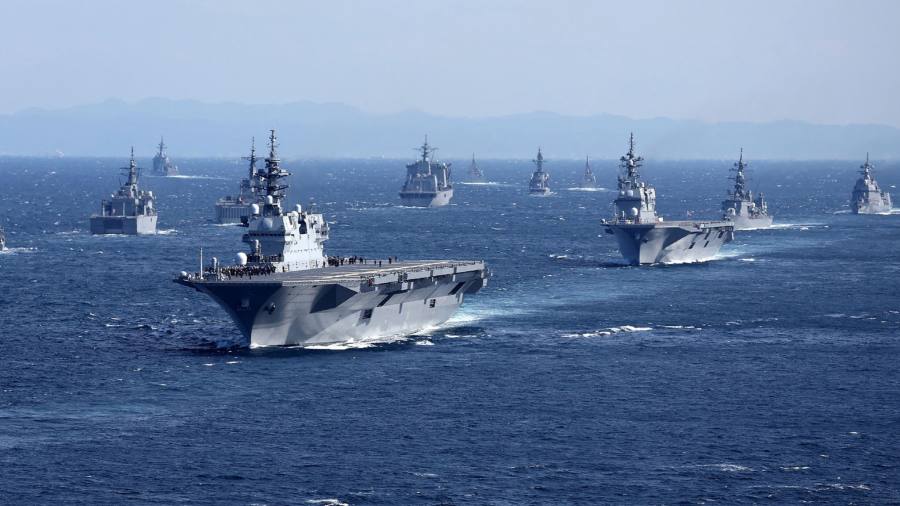
Receive free Japanese politics & policy updates
We’ll send you a myFT Daily Digest email rounding up the latest Japanese politics & policy news every morning.
Japan’s government is planning a record ¥7.7tn ($53bn) in annual defence spending to expand its fleet and missile capabilities to counter rising military threats from China and North Korea.
The budget request on Thursday by the defence ministry includes funding for Aegis-equipped destroyers, new stealth frigates and precision-guided missiles. It is aligned with an ambitious military build-up Tokyo unveiled last year as part of its landmark national security strategy in response to China, which it has called its “greatest strategic challenge”.
The 2024-25 budget represents a 13 per cent rise compared with this fiscal year’s intended spending. It is part of a five-year, ¥43tn plan by Tokyo to strengthen its defence capabilities and bring military spending to roughly 2 per cent of current gross domestic product, compared with the self-imposed cap of about 1 per cent of GDP that Japan has maintained since the 1960s.
The outlays planned for next year include about ¥1.2tn to upgrade Japan’s missile defence capabilities to counter frequent missile launches by North Korea and advances in its military technologies.
The ministry also intends to build destroyers equipped with a US-built Aegis missile defence system after Tokyo scrapped plans to acquire the land-based Aegis Ashore system in 2020 due to high costs.
The planned shopping list also includes the acquisition of counterstrike weapons, including Tomahawk cruise missiles from the US, giving it the ability to strike China.
The defence ministry is also seeking to set aside ¥72.6bn for a fighter jet programme with the UK and Italy as Tokyo binds itself more closely to western military alliances.
The largest portion of the requested spending, ¥3.1tn, will be designated to strengthening the “sustainability and resilience” of the Self-Defense Forces. The aim is to address shortages of basic items — from ammunition stockpiles and fuel tanks to earthquake-resistant facilities — that officials fear will hamper the SDF’s ability to cope with a prolonged conflict.
The SDF has allocated a portion of its planned budget to improving connections to the south-western Nansei chain of islands, a region critical for defending Taiwan and where the US and Japan have agreed to increase training and exercises.
The armed forces will also be reorganised to create a unified command structure over the land, sea and air forces.
The SDF will seek to boost the number of personnel for its cyber security unit from about 890 to 2,410 by the 2024-25 fiscal year and address weaknesses in its defences by building an integrated cloud system for cyber security measures.
To attract more women to join the SDF, the defence ministry wants to spend more money to improve living conditions for female officers.